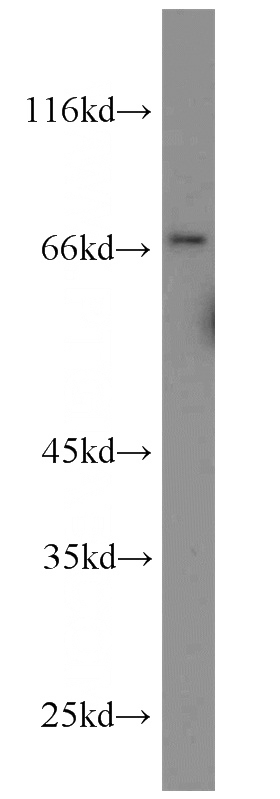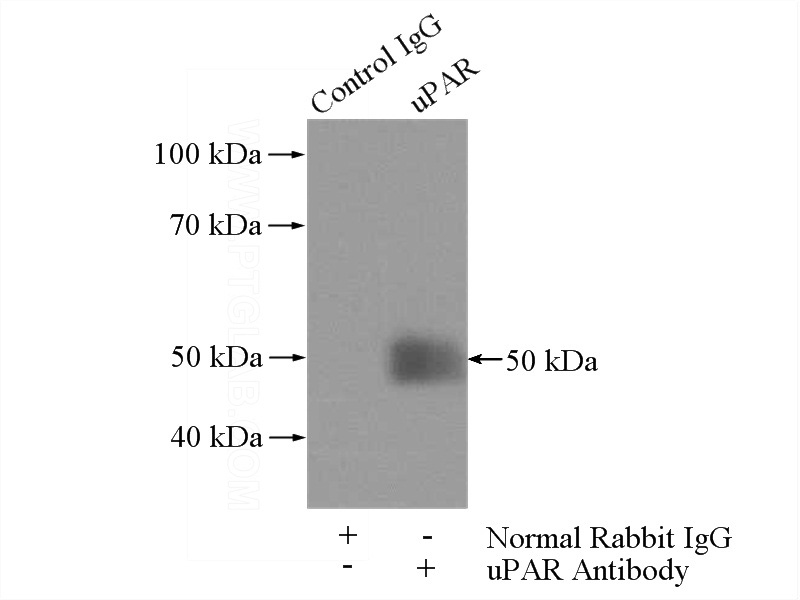-
Product Name
uPAR antibody
- Documents
-
Description
uPAR Rabbit Polyclonal antibody. Positive IP detected in RAW 264.7 cells. Positive WB detected in RAW 264.7 cells, A2780 cells. Observed molecular weight by Western-blot: 35-70kd
-
Tested applications
ELISA, WB, IP
-
Species reactivity
Human, Mouse; other species not tested.
-
Alternative names
CD87 antibody; MO3 antibody; PLAUR antibody; U PAR antibody; UPAR antibody; URKR antibody
-
Isotype
Rabbit IgG
-
Preparation
This antibody was obtained by immunization of uPAR recombinant protein (Accession Number: XM_047438925). Purification method: Antigen affinity purified.
-
Clonality
Polyclonal
-
Formulation
PBS with 0.02% sodium azide and 50% glycerol pH 7.3.
-
Storage instructions
Store at -20℃. DO NOT ALIQUOT
-
Applications
Recommended Dilution:
WB: 1:200-1:2000
IP: 1:200-1:1000
-
Validations

RAW264.7 cells were subjected to SDS PAGE followed by western blot with Catalog No:116623(uPAR, PLAUR antibody) at dilution of 1:500

IP Result of anti-uPAR, PLAUR (IP:Catalog No:116623, 4ug; Detection:Catalog No:116623 1:300) with RAW 264.7 cells lysate 4000ug.
-
Background
Urokinase plasminogen activator surface receptor (uPAR, also known as PLAUR or CD87) is a 45-65 kDa, highly glycosylated, GPI-anchored membrane protein. It contains three homologous domains (D1-D3) of which the N-terminal one (D1) represents the uPA-binding domain. After binding to uPAR, urokinase plasminogen activator (uPA) cleaves plasminogen, generating the active protease plasmin which is involved in a wide variety of physiologic and pathologic processes. In addition to regulating proteolysis, uPAR has important function in cell adhesion, migration and proliferation. Studies reveal that uPAR expression is elevated during inflammation and tissue remodelling and in many human cancers, in which it frequently indicates poor prognosis. (PMID 20027185; 12461559)
-
References
- Chauhan S, Boyd DD. Regulation of u-PAR gene expression by H2A.Z is modulated by the MEK-ERK/AP-1 pathway. Nucleic acids research. 40(2):600-13. 2012.
- Ge Y, Siegel AP, Jordan R, Naumann CA. Ligand binding alters dimerization and sequestering of urokinase receptors in raft-mimicking lipid mixtures. Biophysical journal. 107(9):2101-11. 2014.
Related Products / Services
Please note: All products are "FOR RESEARCH USE ONLY AND ARE NOT INTENDED FOR DIAGNOSTIC OR THERAPEUTIC USE"
